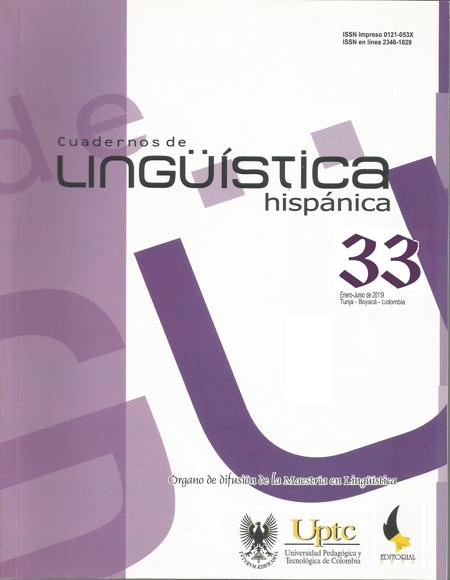Acquisition of Nouns Derived from a Verb of English as L2

Abstract
There are several studies on the morphological acquisition of English as L2 but the errors committed by the participants have not been studied in depth. The objective in this article is to analyze the errors in a derivation test to determine percentage and typo - logical differences between Mexican participants with different proficiency in English. The methodology was exploratory of quasi-experimental type. It focused on four nominalizing suffixes controlling their level of difficulty and productivity, and the cognate status and frequency of nouns. The design of the test was based on the proposal of Carlisle (2000). The errors were classified following Marín (2013) and analyzed based on the levels of difficulty in acquiring English affixes from Bauer and Nation (1993) and the morpholog- ical derivation knowledge aspects of Tyler and Nagy (1989). The results show that both the percentage and the type of errors vary according to the level of proficiency of the participants. A large percentage of use of inflectional suffixes was found, that is, of lower difficulty level; and it was evidenced that the distributional knowledge of the suffixes is the last to be acquired. These findings may be useful for teaching purposesKeywords
acquisition, English, morphology, productivity V, difficulty, frequency
Author Biography
Brenda Vargas Vega
Maestra en Lingüística Aplicada por la Universidad Autónoma de Querétaro, México.
Eva Patricia Velásquez Upegui
Doctora en Lingüística por el Colegio de México, México.
References
Alotaibi, M. A. & Alotaibi, A. M. (2017). On the Acquisition of Derivational Suffixes by Kuwaiti EFL Learners.
European Scientific Journal, ESJ, 13(17), 223-238.
Bauer, L. (1983). English Word-Formation. Cambridge: Cambridge University Press.
Bauer, L. & Nation, P. (1993). Word Families. International Journal of Lexicography, 6(4), 253-279.
Carlisle, J. F. (2000). Awareness of the Structure and Meaning of Morphologically Complex Words: Impact on Reading. Reading and Writing, 12(3), 169-190.
ClassMarker. (2018). Online Testing Free Quiz Maker. Recuperado de https://www.classmarker.com
Curinga, R. (2013). Direct and Indirect Effects of Morphological Awareness on Reading Comprehension for Adolescent Spanish-English Emergent Bilinguals. BUCLD 37 Online Proceedings Supplement, 1-12.
Kieffer, M. J. & Lesaux, N. K. (2008). The Role of Derivational Morphology in the Reading Comprehension of Spanish-Speaking English Language Learners. Reading and Writing, 21(8), 783-804.
Laws, J.V. & C. Ryder (2014). Getting the Measure of Derivational Morphology in Adult Speech: A Corpus Analysis Using MorphoQuantics. Language Studies Working Papers, 6, 3-17.
Lowie, W. (2000). Cross‐Linguistic Influence on Morphology in the Bilingual Mental Lexicon. Studia Linguistica, 54(2), 175-185.
Lowie, W. (2005). Exploring a Second Language: The Discovery of Morphological Productivity. Eurosla Yearbook, 5(1), 251-268.
Marín, F. (2013). Análisis y diagnóstico de errores en estudiantes de inglés como lengua extranjera. Educación y Formación, 8, 182-198.
Mondoñedo, A. (2011). Nominal Participles, A Case of Categorical Alternance: Eventive Nominalization in “-da”. Anuario del Seminario de Filología Vasca “Julio de Urquijo”, 39(2), 161-174.
Muse, A. E. (2005). The Nature of Morphological Knowledge. (Tesis de doctorado). Florida State University. Florida, USA.
Peris, A. & Delor, M. T. (2009). Evaluación de los criterios lingüísticos para la distinción "evento" y" resultado" en los sustantivos deverbales. En P. Cantos & A. Sánchez (Eds.) Panorama de investigaciones basadas en corpus, (pp. 596-611). Murcia: Asociación Española de Lingüística de Corpus.
Ramírez, G., Chen, X., Geva, E. & Luo, Y. (2011). Morphological Awareness and Word Reading in English Language Learners: Evidence from Spanish-and Chinese-Speaking Children. Applied Psycholinguistics, 32(03), 601-618.
Schepens, J., Dijkstra, T., Grootjen, F. & Van Heuven, W. J. (2013). Cross-Language Distributions of High Frequency and Phonetically Similar Cognates. PloS One, 8(5), 1-15.
Sleeman, P. & Brito, A. M. (2010). Nominalization, Event, Aspect and Argument Structure: A Syntactic Approach. In M. Duguine, S. Huidobro & N. Madariaga (Eds.) Argument Structure and Syntactic Relations: A Cross-Linguistic Perspective (pp. 113-132). Philadelphia: John Benjamins Publishing.
Stanfa, K. (2010). Differentiating among Students: The Value Added of a Dynamic Assessment of Morphological Problem-Solving. (Tesis de doctorado). University of Pittsburgh. Pensilvania, E.U.
Tyler, A. & Nagy, W. (1989). The Acquisition of English Derivational Morphology. Journal of Memory and Language, 28(6), 649-667.